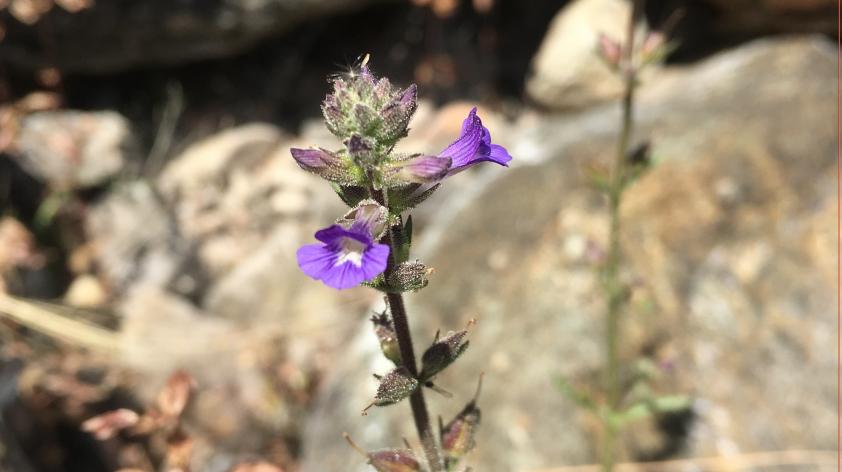
Seed Collecting Season – 2018
The ebb and flow of yearly precipitation in San Diego County can be maddening! After amazing rainfall in the winter of 2016 and spring of 2017, we received very little this past winter and early spring. It’s natural for us to sound the alarm, envisioning our waterless future and forever altered landscape, but our native plants quietly continue their battle to germinate, flower, and produce seeds in this arid and often hostile habitat.
The truth is our native plants are resilient and prepared for years like this.
Annual plants are often hard seeded and can survive for long periods of time in the soil seed bank, waiting for enough water to trigger their germination. Many of our native species are geophytes, having evolved to survive underground for long periods of time when conditions are harsh. Perennial shrubs and trees have deep water-seeking roots, and are able to withstand the stresses of such a year. Our native plants will persevere through tough years. In their own ways, they will ration. They will produce fewer flowers, fewer seeds, many may choose to forego any growth cycle this year and wait, but they will survive.
At the Native Plant Seed Bank, we too must continue our work. Any plans of collecting seed from vernal pool plant species have been shelved, as the rains never formed pools this year. Yet it is still important that we collect from as many rare plant populations as we can. Plants that are able to grow and produce seeds this year might have genetic traits that allow them to thrive during very dry times. These traits may become increasingly important if prolonged droughts become more frequent, and it is important we conserve these genes. There are so many rare and threated plants in our county, there’s no shortage of work we can do.
Salvia munzii is endemic to San Diego County and northern Baja. Known from roughly 40 populations, Munz’s sage is threatened by development, off road recreation, and invasive plants. This species can occasionally be found in native plant nurseries, though wild populations are becoming much more rare. The tall spikes of purple flowers are typical of our native salvias, and are a favorite among pollinators, especially butterflies and bees. We collected seed from a population in southern San Diego County this week.
Packera ganderi is known from just 14 populations on the planet, almost exclusively in San Diego County. Gander’s ragwort is in the sunflower family (Asteraceae) and it is estimated that there are roughly 4,000 individuals living today. This species is a perennial herb, dying back at the surface after each growing season, only to sprout again with the winter and spring rains. The plant grows at higher elevations, in the shade and protection of larger shrubs, often manzanitas, and can be very difficult to find. We found a population of this species in the south of the county, and made a seed collection to ensure this plant is conserved ex-situ.
Stemodia durantifolia is a plant that clings to life on rock faces and in the cracks of large boulders along our dry river washes. In California, it is only found in San Diego and Riverside Counties, though it’s also found in Arizona and northwestern Mexico. There has been little research into the conservation needs of this small plant. It is considered rare and threatened in California, known from just 20 occurrences, and seed has never been collected for long-term conservation. We located a population earlier this spring, and hiked up a long, rocky mountain wash to ensure we have this beautiful plant represented in our seed bank.
To read more about our seed banking efforts, and the species we are conserving, click the link below and read my other blogs.
http://institute.sandiegozoo.org/science-blog/by-author/6187













